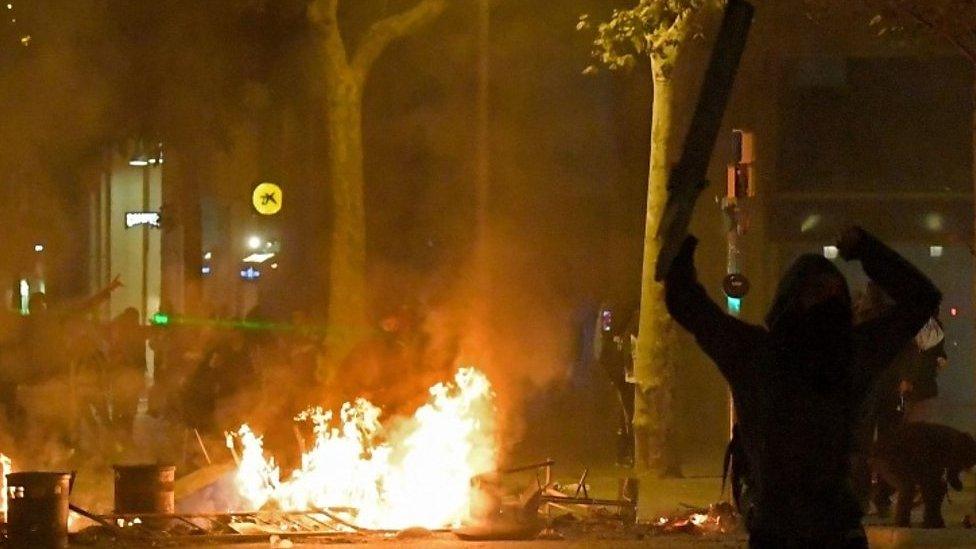Catalan crisis: AP-7 Spain motorway protesters face French police
- Published
French police acted after the blockade had gone on for almost 24 hours
French riot police are forcibly removing Catalan pro-independence protesters who are blocking both sides of a motorway linking Spain and France.
Demonstrators camped overnight on the AP-7 highway at a north-eastern border point near the Spanish city of Girona.
Officers used tear gas before physically clearing protesters almost 24 hours after they had arrived.
It comes as the Catalan parliament backed a non-binding motion on the right to exercise self-determination.
And, in a blow to the Spanish government, a jailed Catalan leader has won an initial court victory in his fight to take up a seat in the European Parliament.
What happened at the border?
Up to 2,000 protesters first gathered at the border on Monday, using vehicles and barriers to block the road before sitting on the tarmac.

Catalan pro-independence protesters set up roadblocks on the AP-7 motorway on Monday
The roadblocks were spread across the border and into French territory, Spanish newspaper El País reported.
After warning demonstrators that they faced being forcibly evicted if they did not disperse, police moved in - some armed with tear gas canisters.
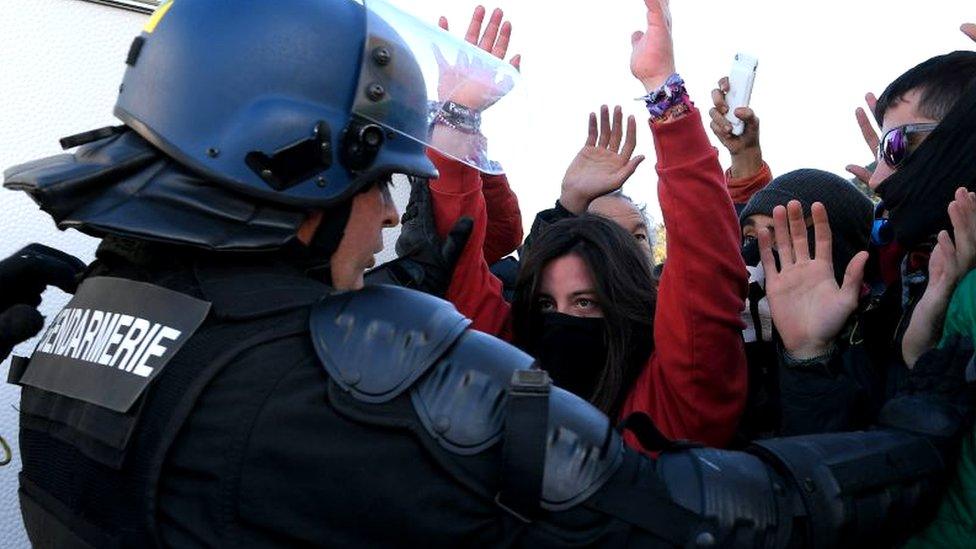
Spanish protesters confront a French gendarme at the border
Footage posted on social media showed French police officers using pushing people - in some cases dragging them one by one - to the Spanish side of the border at La Jonquera.
Allow X content?
This article contains content provided by X. We ask for your permission before anything is loaded, as they may be using cookies and other technologies. You may want to read X’s cookie policy, external and privacy policy, external before accepting. To view this content choose ‘accept and continue’.

"The eviction begins at La Jonquera with the use of tear gas," wrote one protester.
Allow X content?
This article contains content provided by X. We ask for your permission before anything is loaded, as they may be using cookies and other technologies. You may want to read X’s cookie policy, external and privacy policy, external before accepting. To view this content choose ‘accept and continue’.

The Catalan police force - the Mossos - also began removing people, many of whom had their faces covered.
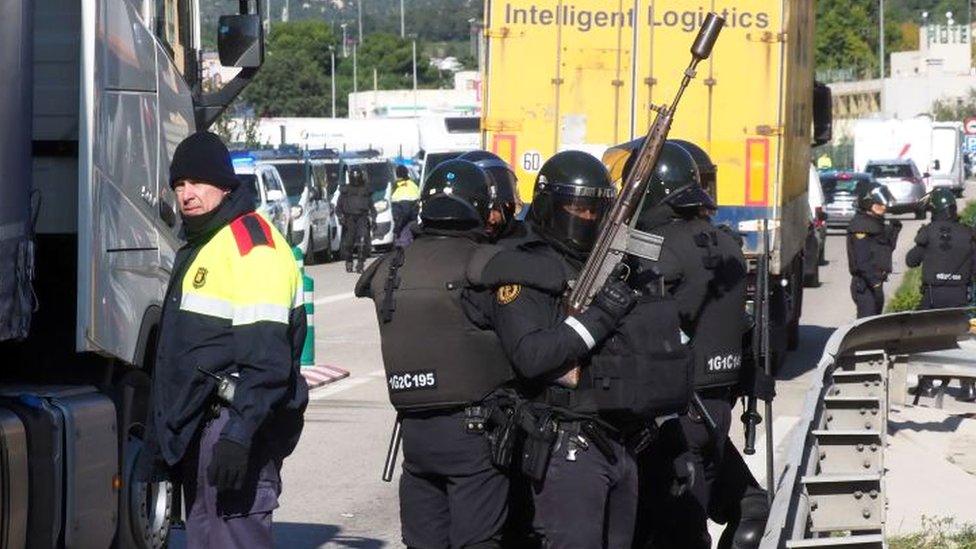
Spanish police patrol the Spanish-French border in La Jonquera
According to reports, the demonstrators were told to move any obstructing vehicles within hours, before cranes would be used to clear them and fines issued of up to €600 ($660; £515).
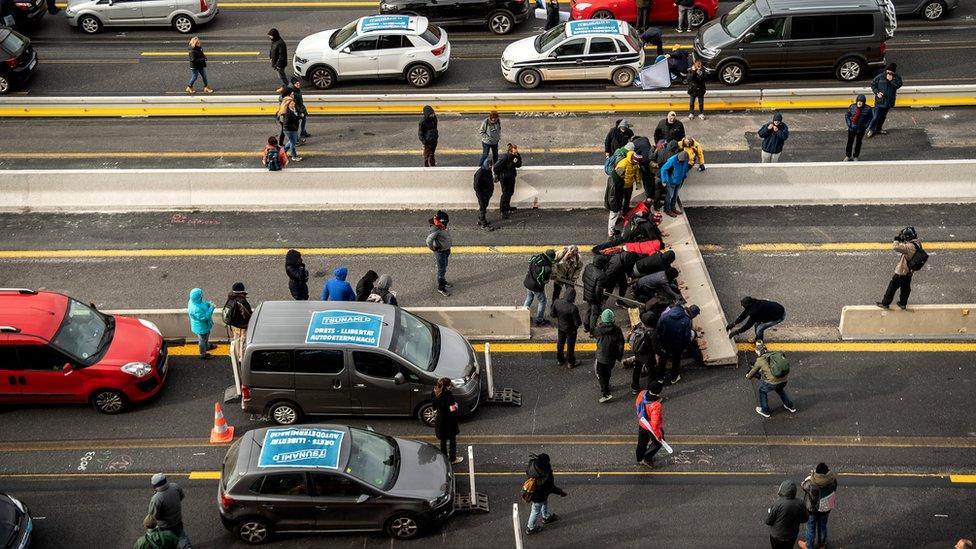
Protesters used concrete barriers to block traffic
Police have arrested at least 19 people, local media report.
How did so many protesters mobilise?
The protest was organised through an app by a group known as Tsunami Democràtic, which directs pro-independence demonstrators in Catalonia to protest sites.
Thousands of people arrived on Monday and dozens of vehicles were used to block the route, which is an important transport link between the two countries.
A group called the Republican Defence Committees also appealed on social media for "co-ordinated action" to help set up burning barricades.
Following the police action on Tuesday, Tsunami Democràtic called for demonstrators to mobilise at a separate Spanish border point further to the west, at Behobia, near the Basque city of San Sebastián.

Last month, the jailing of nine Catalan separatist leaders for up to 13 years led to violent protests on the streets of Barcelona.
The leaders were convicted by Spain's Supreme Court of sedition over their role in an independence referendum in 2017, which Spain said was illegal.
Catalonia protesters: 'We are living demonstrations'
What's the latest on the Catalan crisis?
On Tuesday, in defiance of a warning by Spain's Constitutional Court, Catalonia approved a non-binding motion expressing the will to exercise self-determination "to respect the will of the Catalan people".
Spain had warned the region's lawmakers that legal action would be taken if the motion was approved.
Meanwhile, the European Court of Justice (ECJ) has been advised that jailed Catalan separatist leader Oriol Junqueras's election as member of the European Parliament (MEP) should be respected.
The legal advice is a setback to Madrid and means that it is now likely that the ECJ will order in favour of Mr Junqueras who is challenging for the right to sit in the parliament.
Mr Junqueras was barred from attending a ceremony to swear an oath to the Spanish constitution and the ECJ's advocate general advised that not swearing the oath should not stop him taking up his seat as an MEP.
Will Spain's election break deadlock?
Spaniards voted in a general election on Sunday that saw right-wing parties make major gains.
While Spain's governing Socialists (PSOE) won the most seats, the conservative Popular Party (PP) came second and far-right Vox more than doubled its seats to become the country's third most-powerful party.
Vox takes a hard-line stance on the issue of Catalan nationalism. Pro-independence Catalan parties also did well in the vote.
On Tuesday, the Socialists - who won 120 parliamentary seats - and the left-wing Podemos (We Can) party - with 35 seats - said they had reached an agreement on the basis of forming a coalition government.
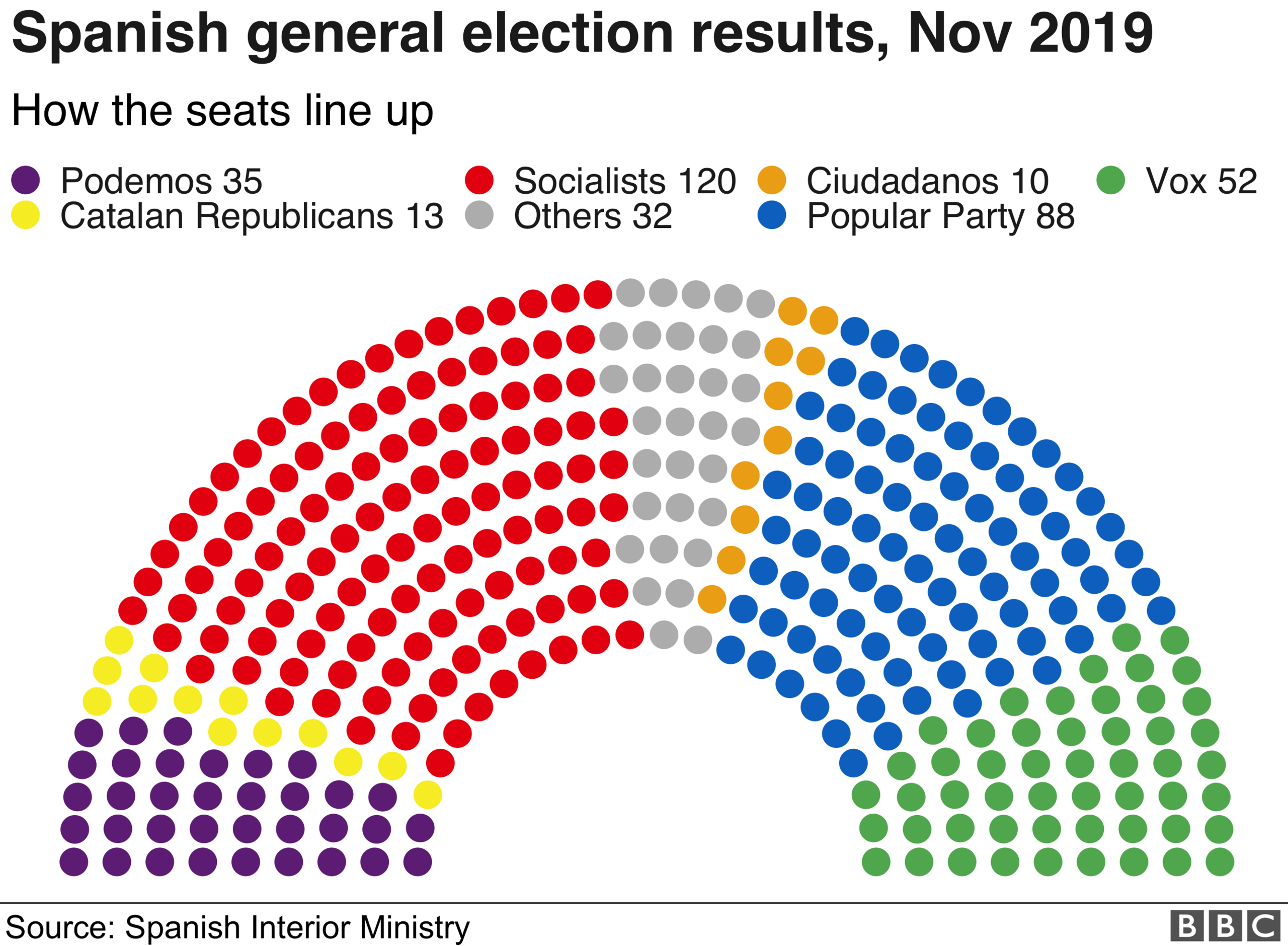

"It's a deal for four years," Socialist leader and acting Prime Minister Pedro Sánchez said after announcing the news alongside Pablo Iglesias, the leader of Podemos. The leaders of the two parties had only recently refused to work together.
"Spain needs a stable government, a solid government," Mr Sánchez added.
A pact, however, would still leave the two parties 21 seats short of a majority in Spain's 350-seat parliament. Even with the support of smaller regional parties, they would come up short and would need Catalan pro-independence MPs to abstain.
What sparked the Catalan protests?
Catalan nationalists have long complained that their region, which has a distinct history dating back almost 1,000 years, sends too much money to poorer parts of Spain, as taxes are controlled by Madrid.
The wealthy region in Spain's north-east is home to about 7.5 million people, with their own language, parliament, flag and anthem.
In September, a march in Barcelona in support of Catalonia's independence from Spain drew crowds of about 600,000 people - one of the lowest turnouts in the eight-year history of the annual rally.
- Published15 October 2019

- Published11 November 2019

- Published18 October 2019
